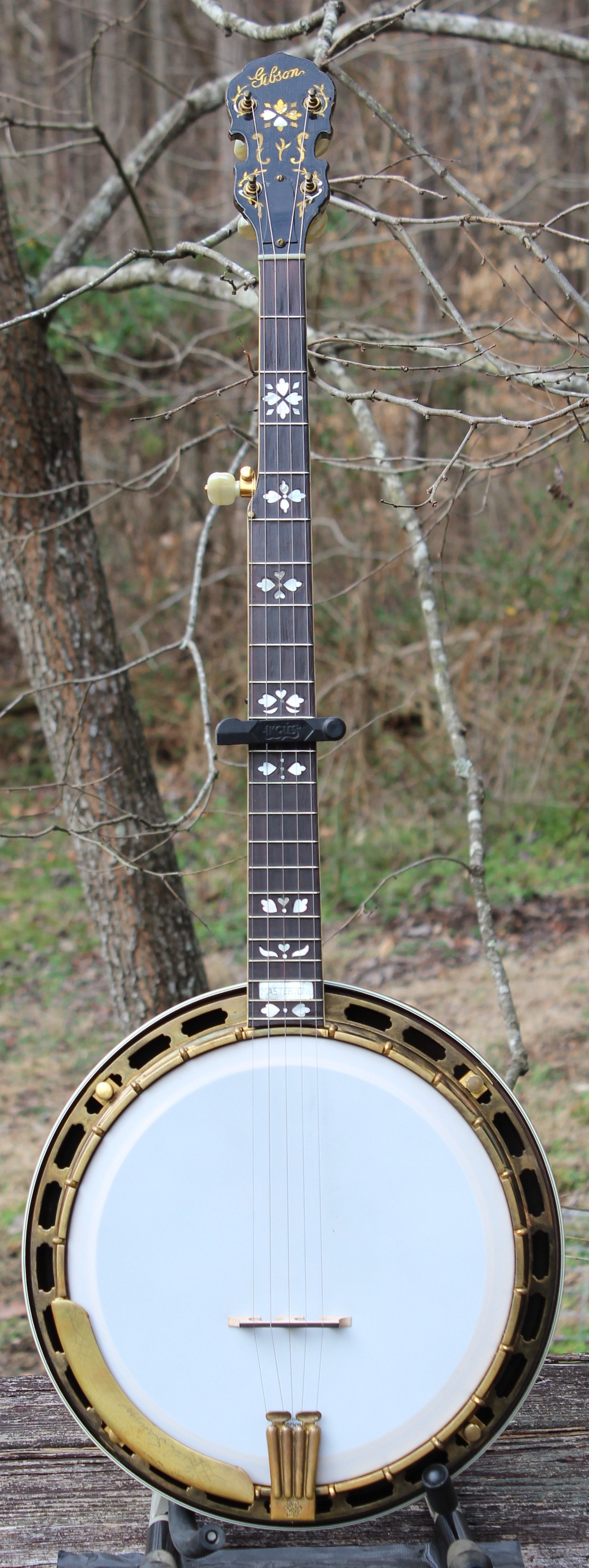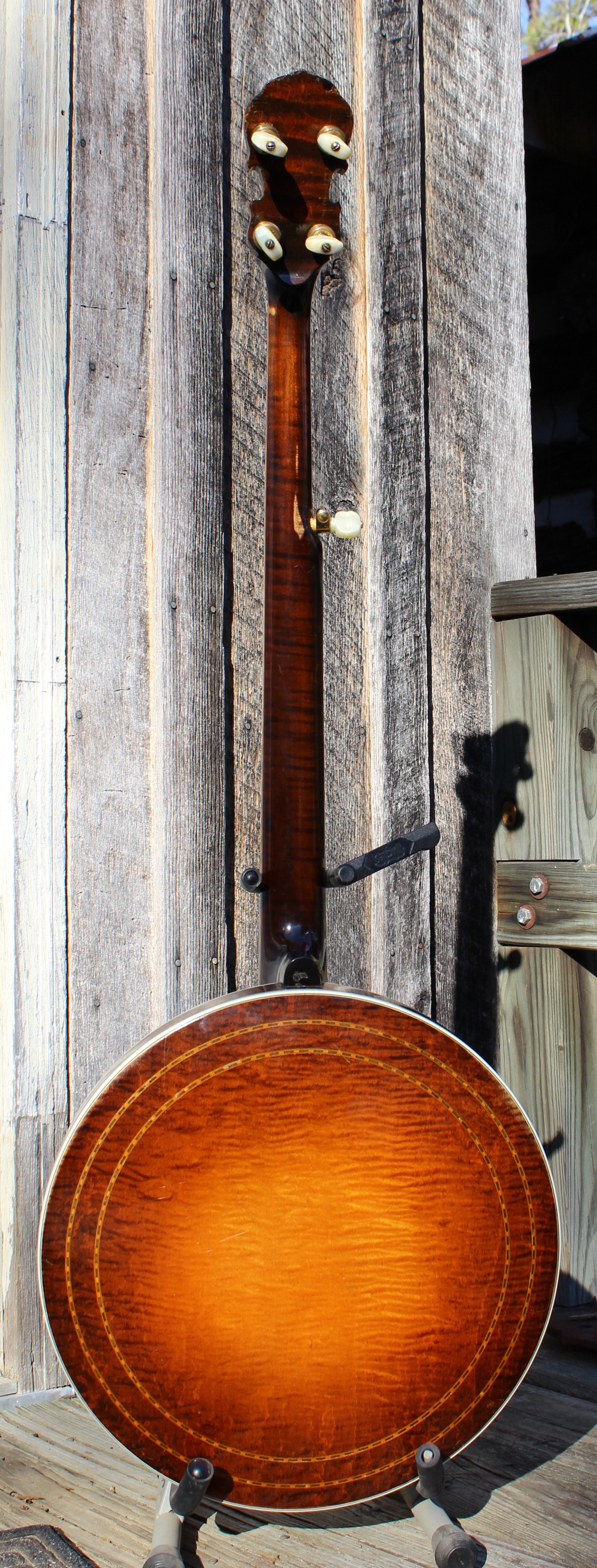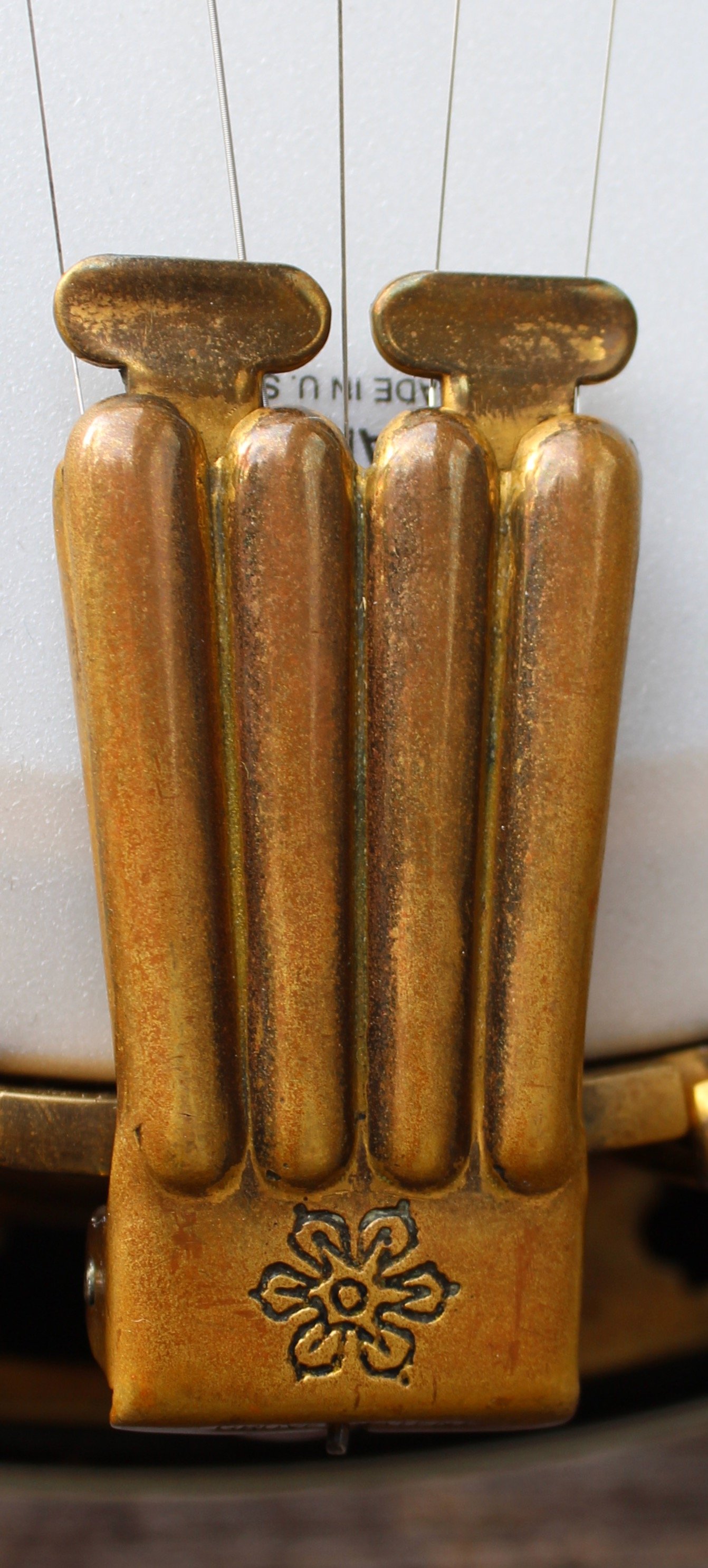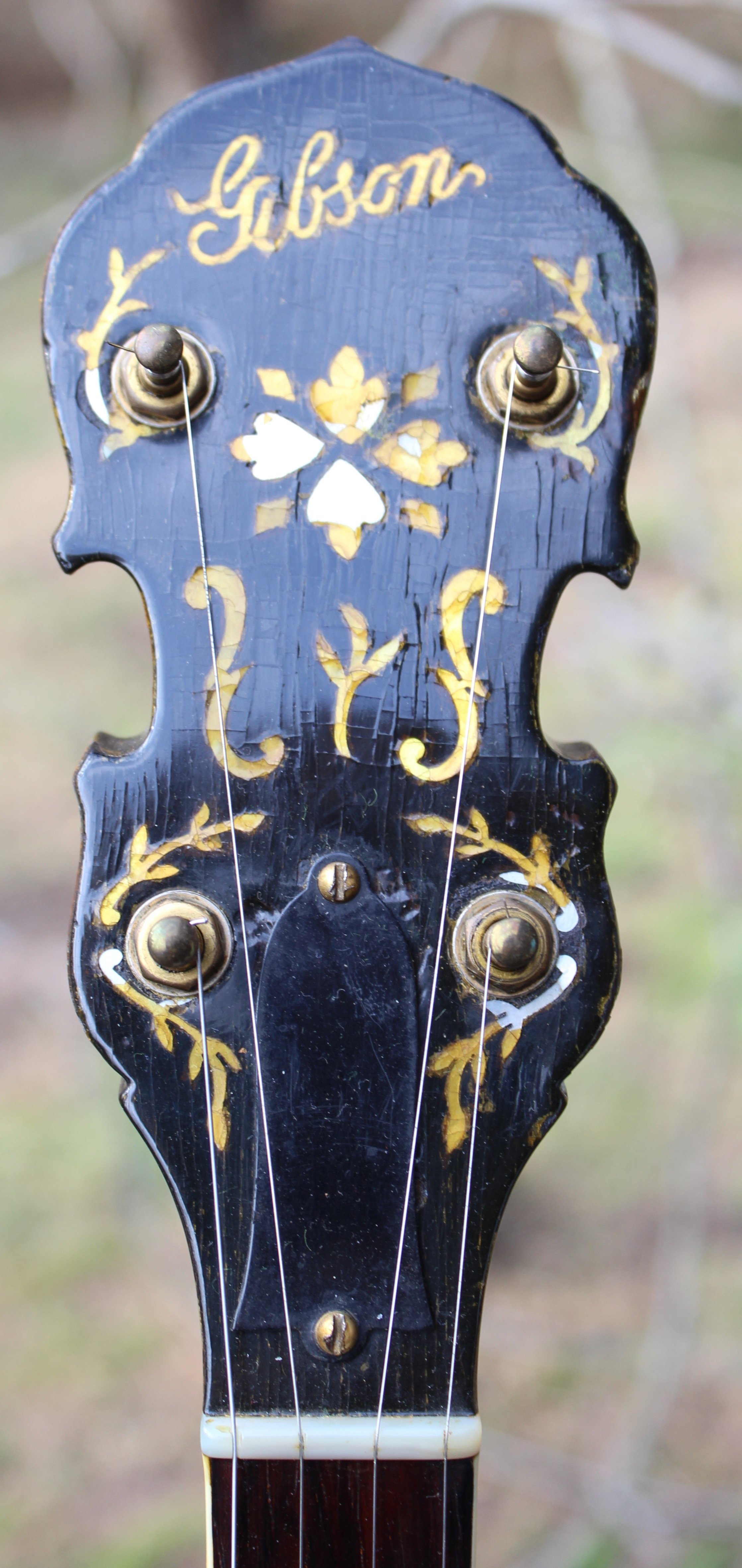Gibson RB-Granada 9166-1
“The Ground Speed Banjo!”
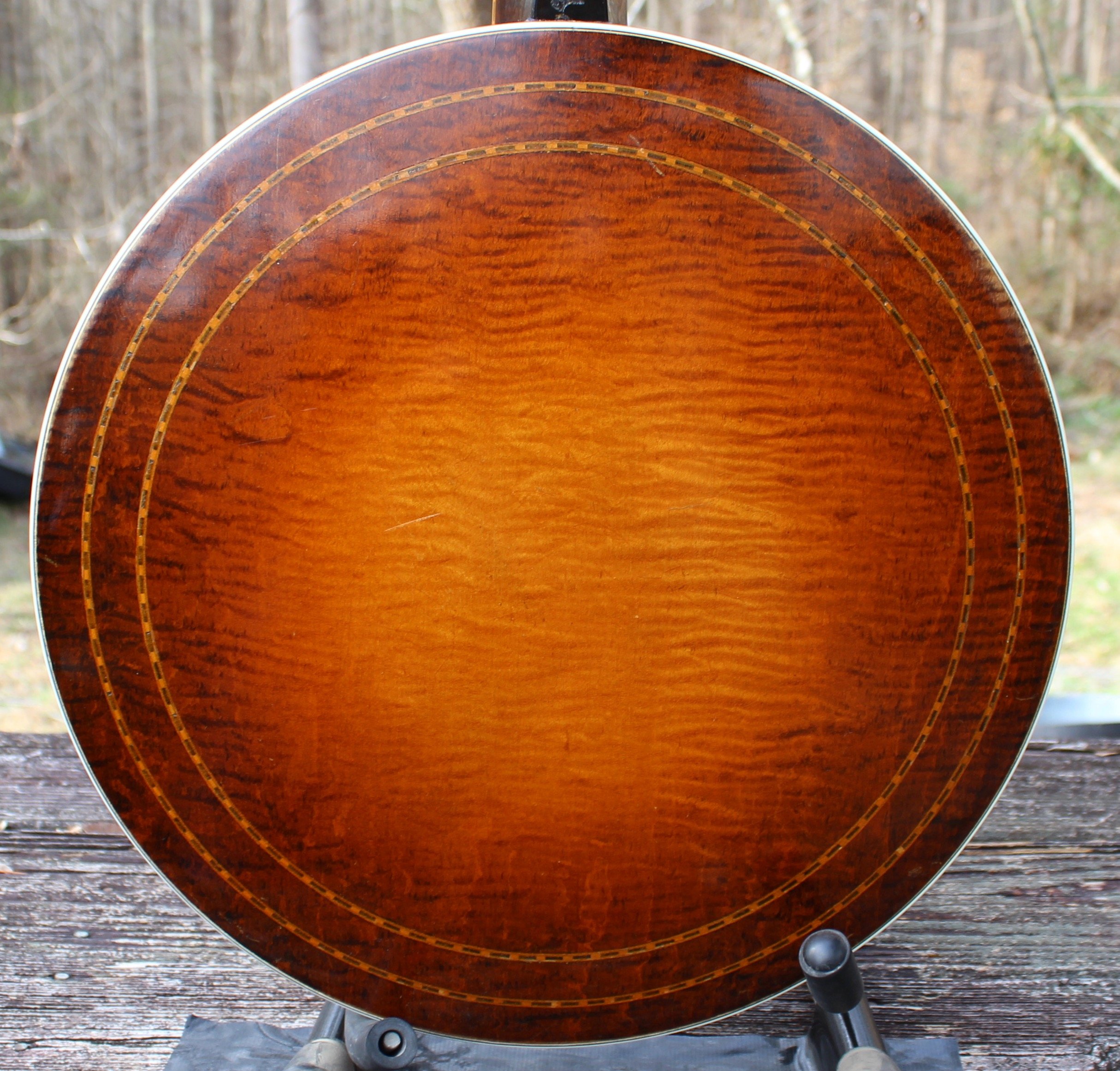
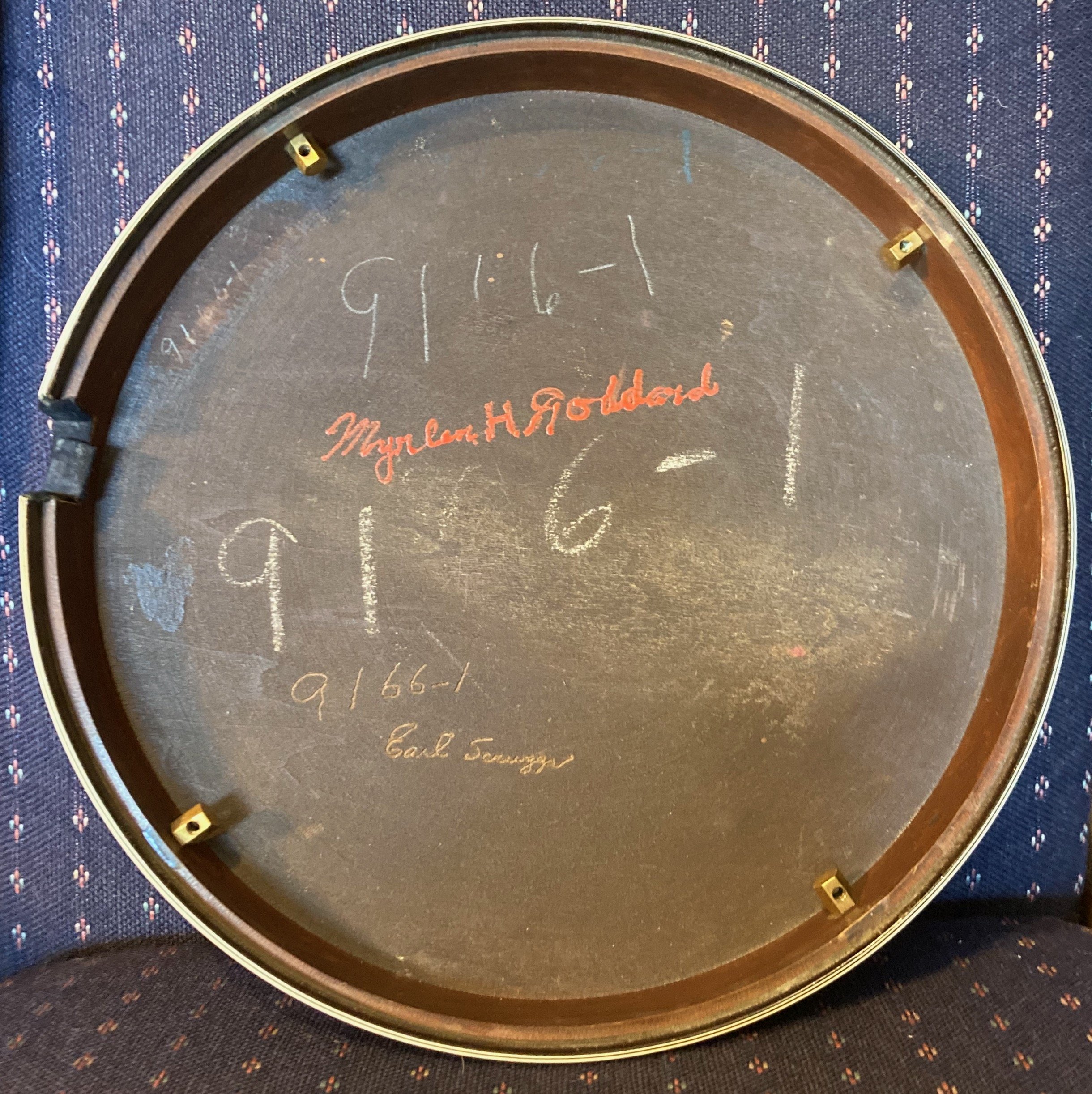
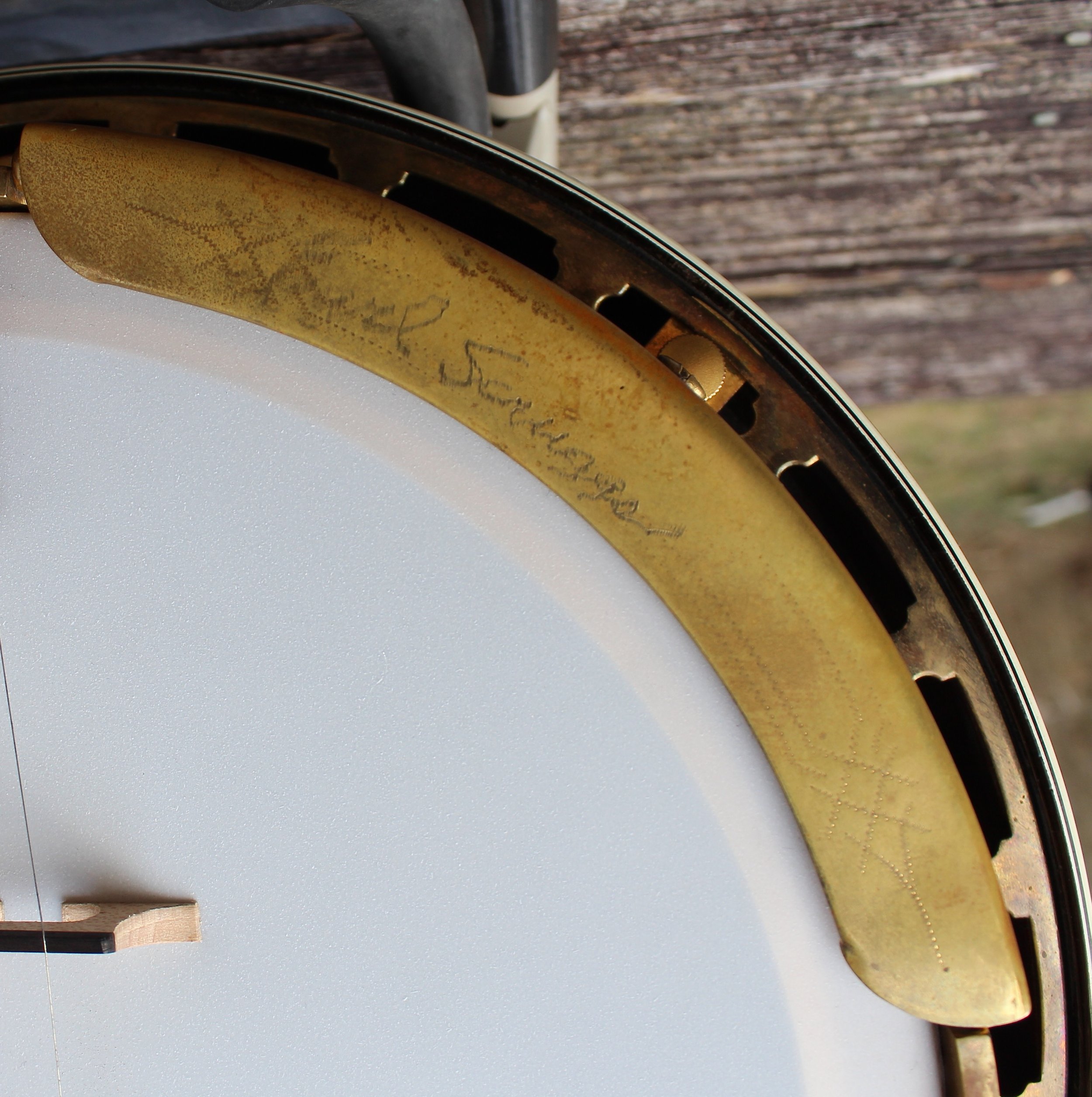
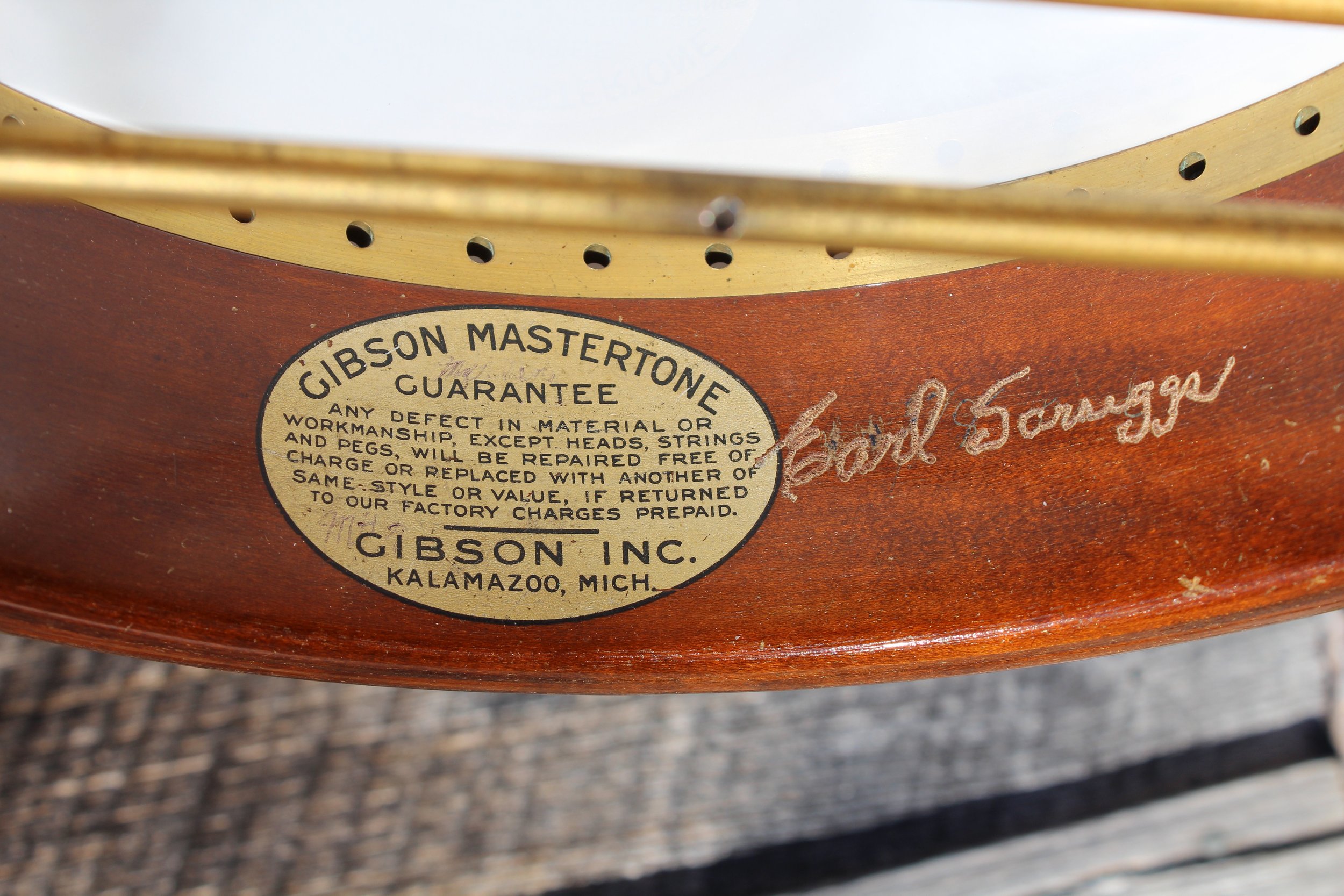
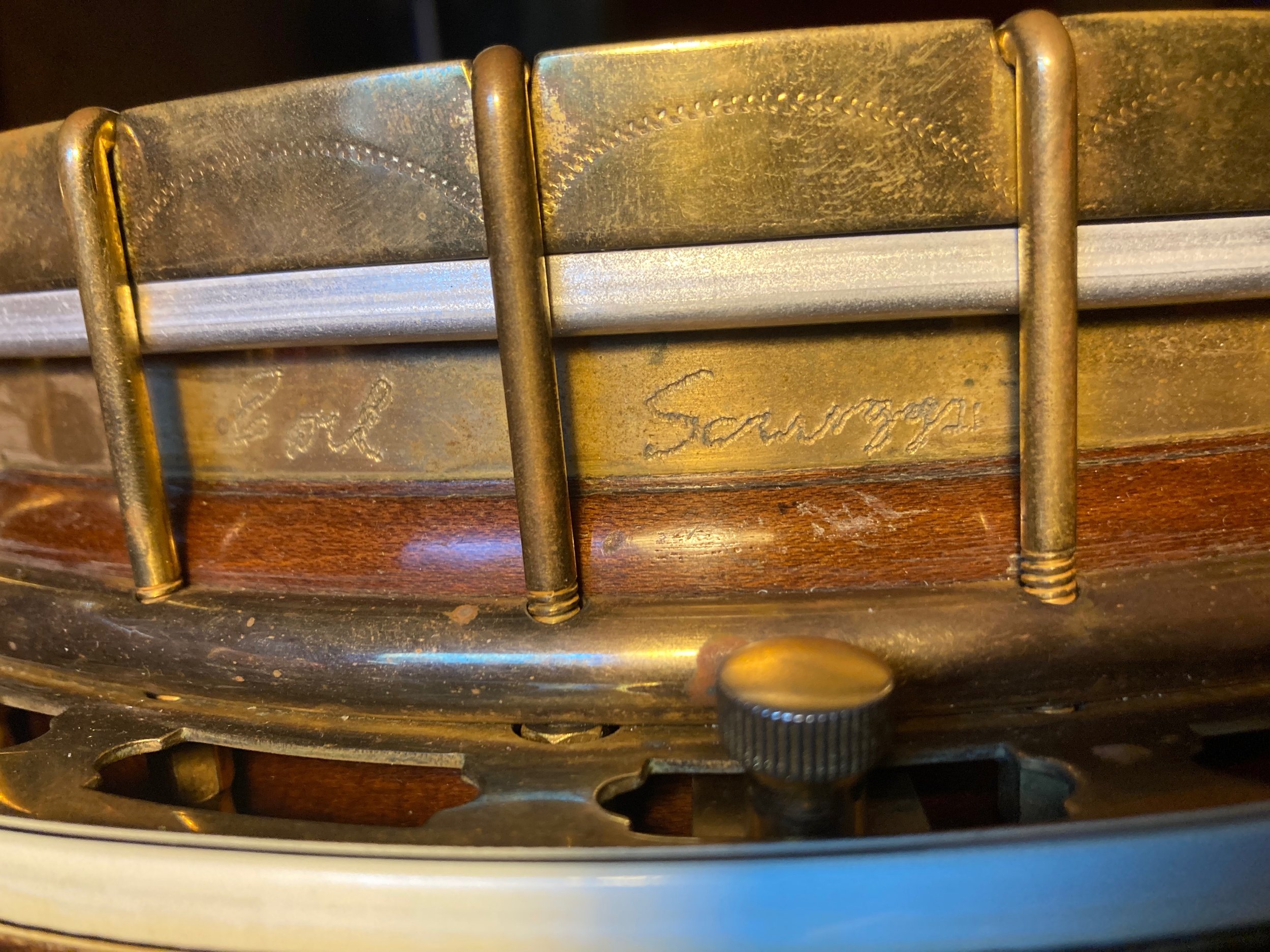
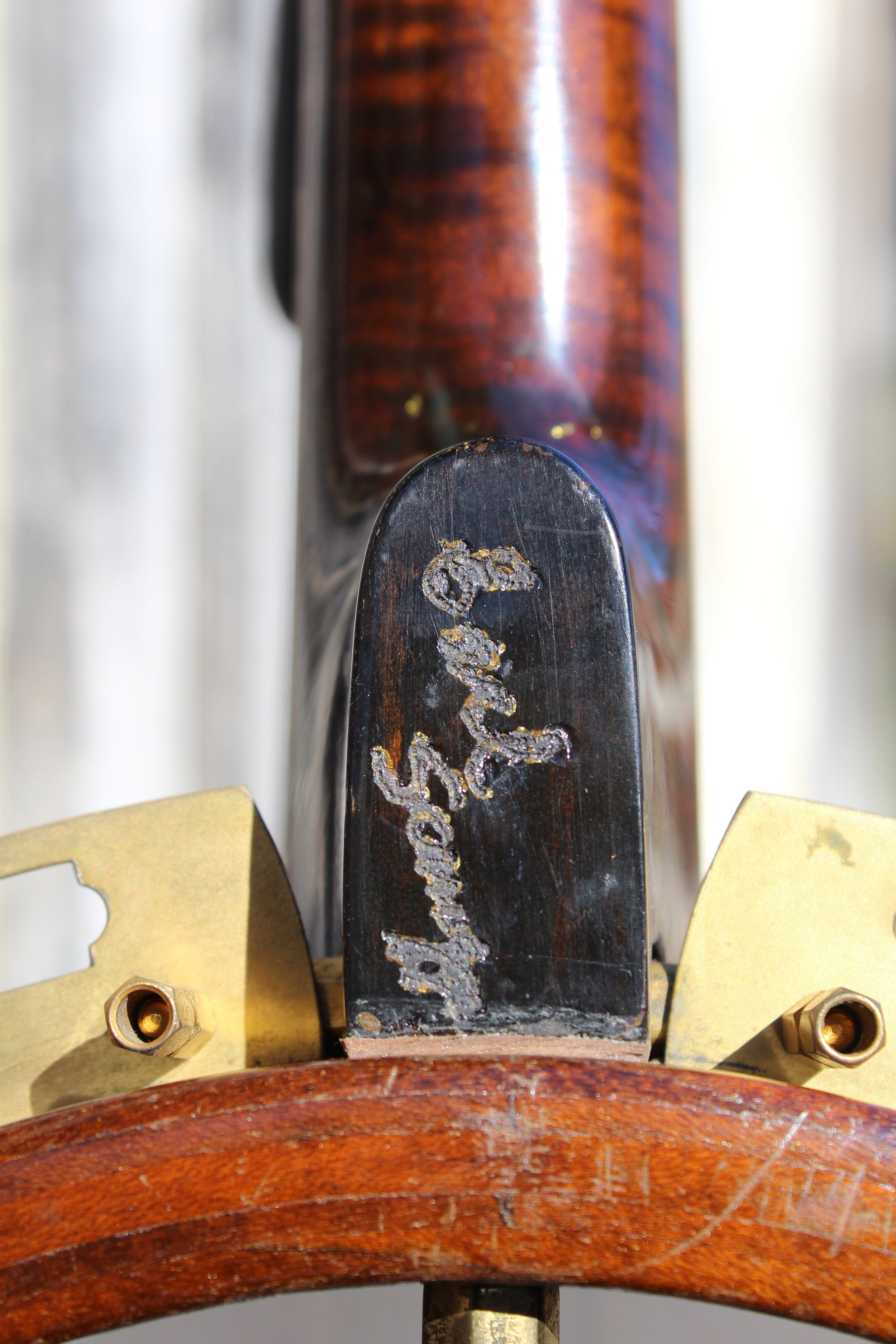
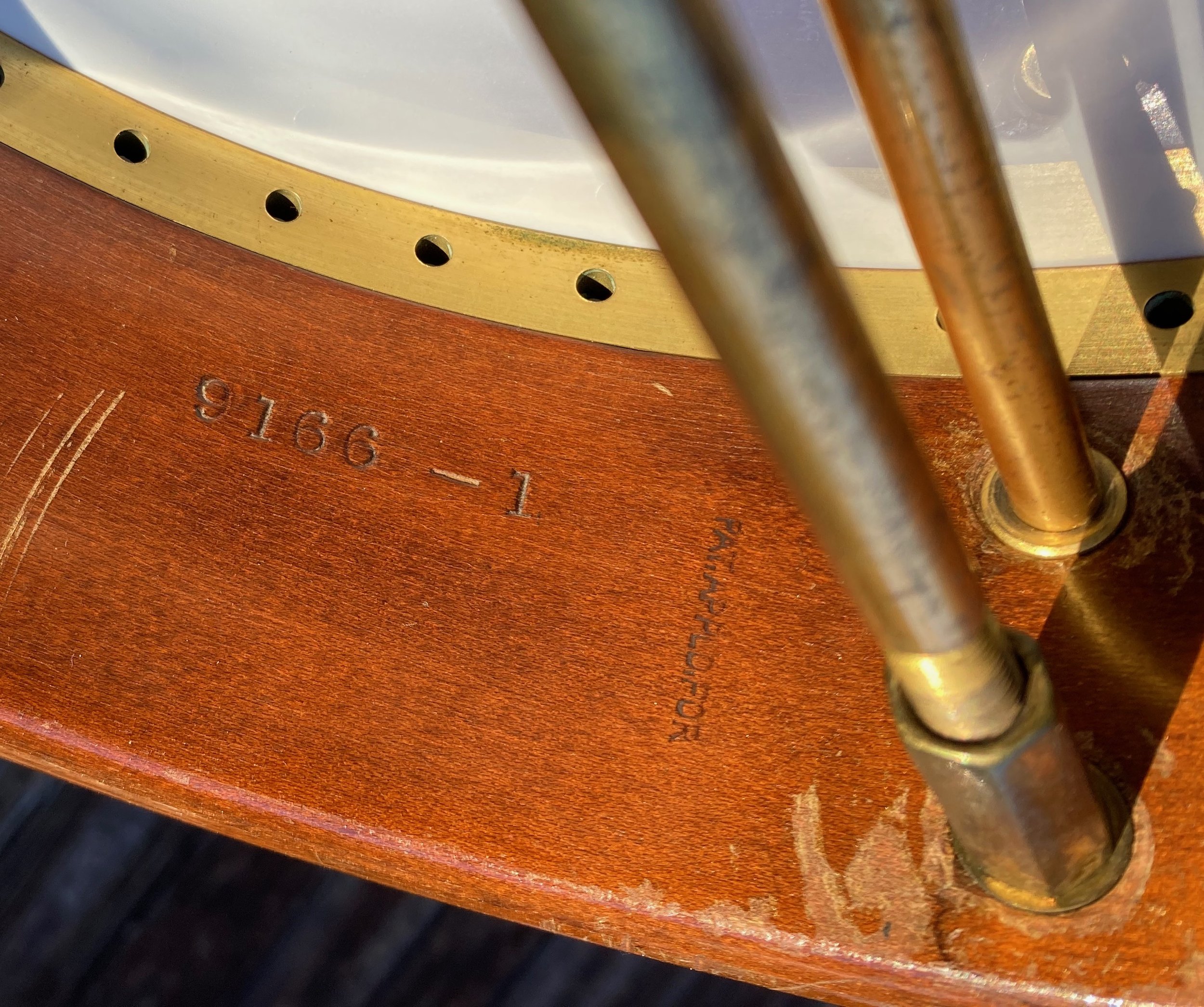
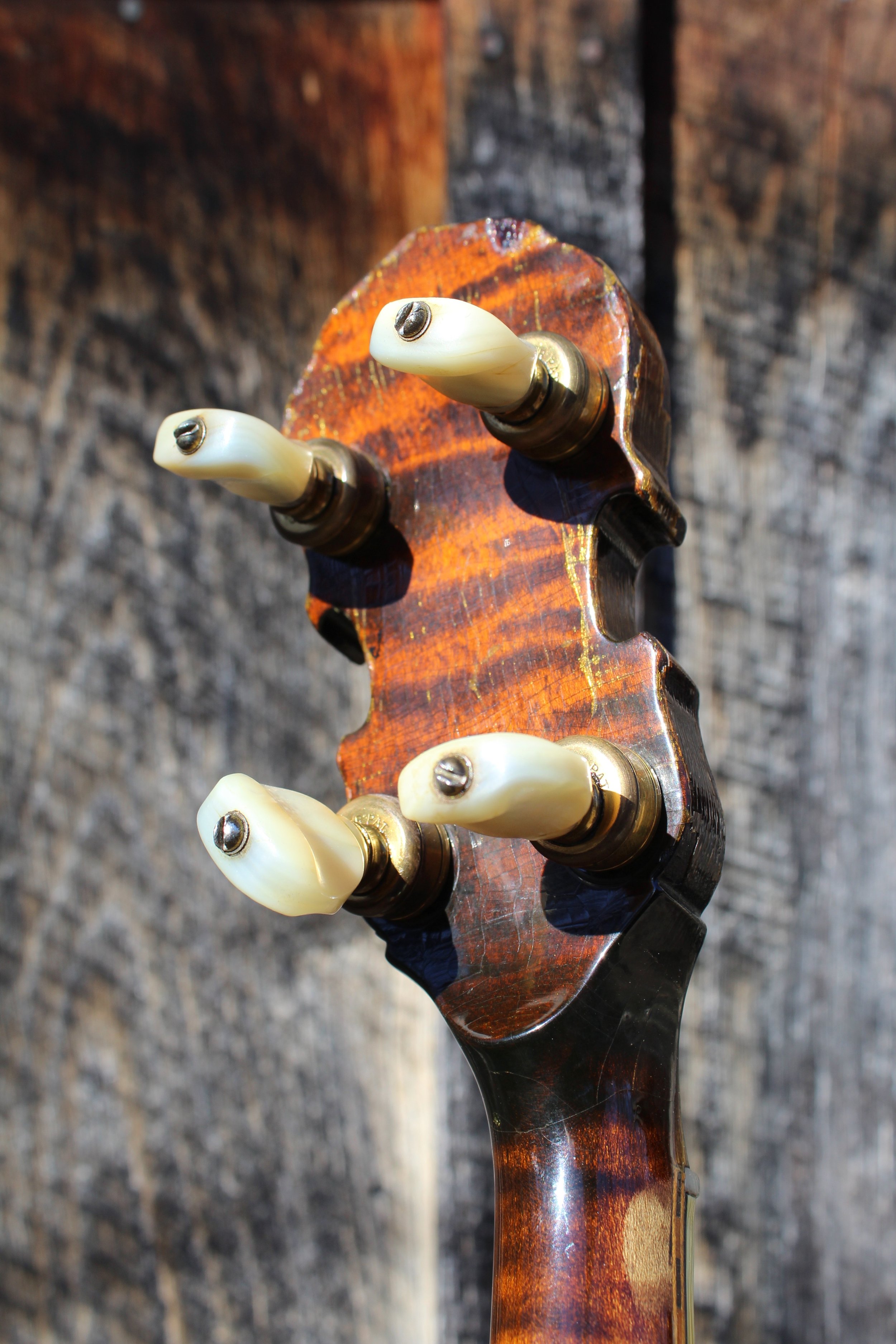
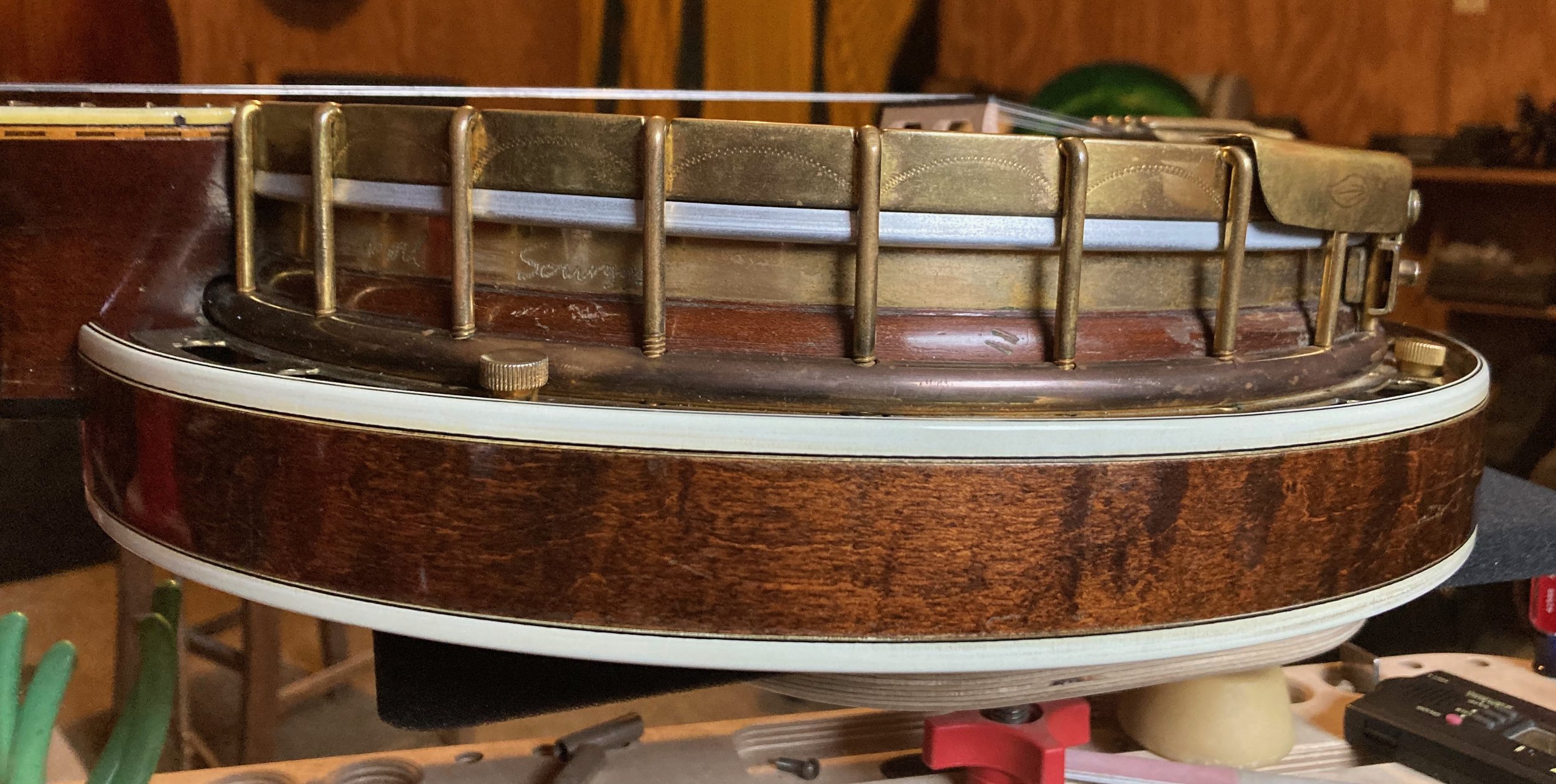
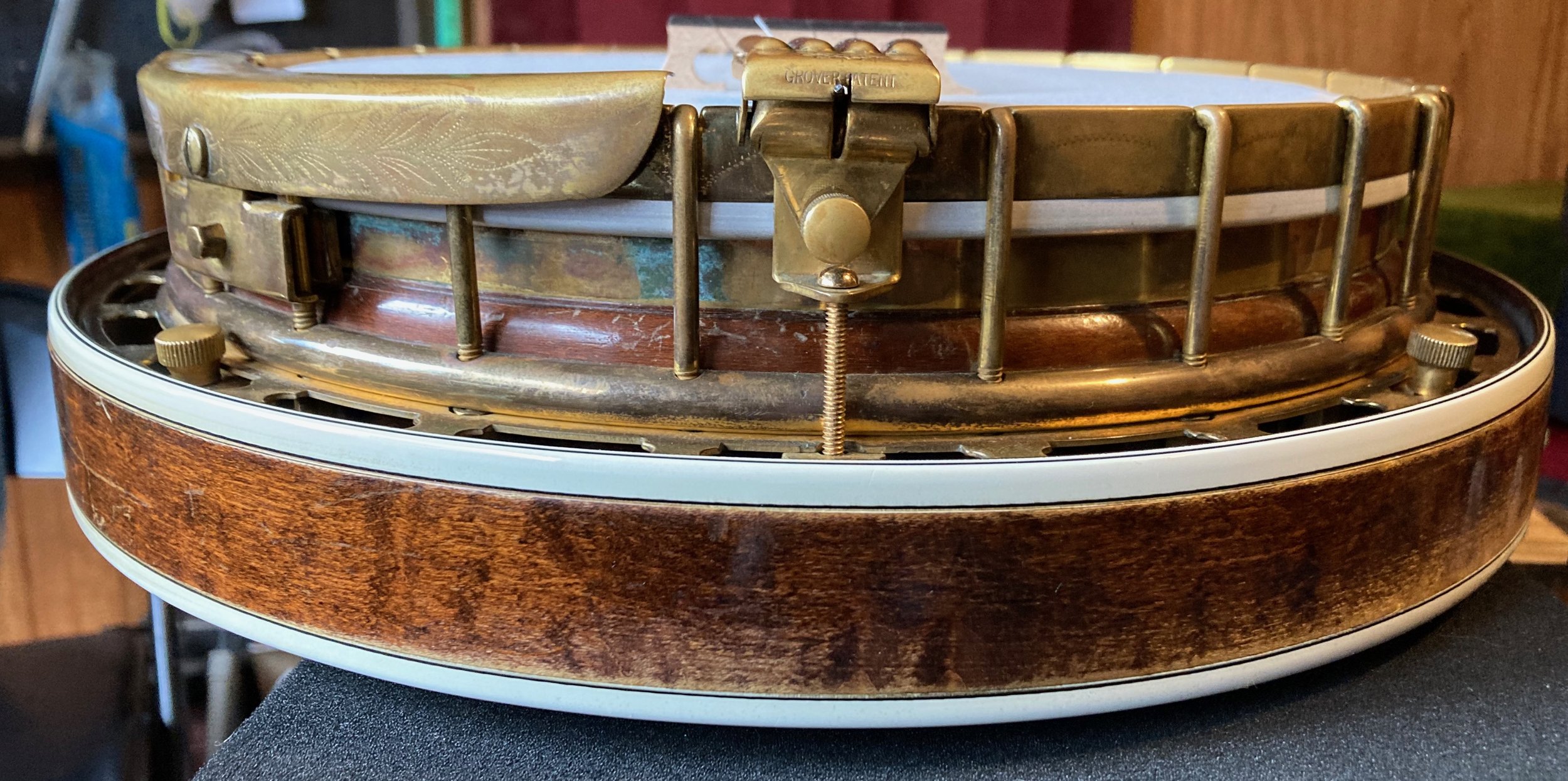

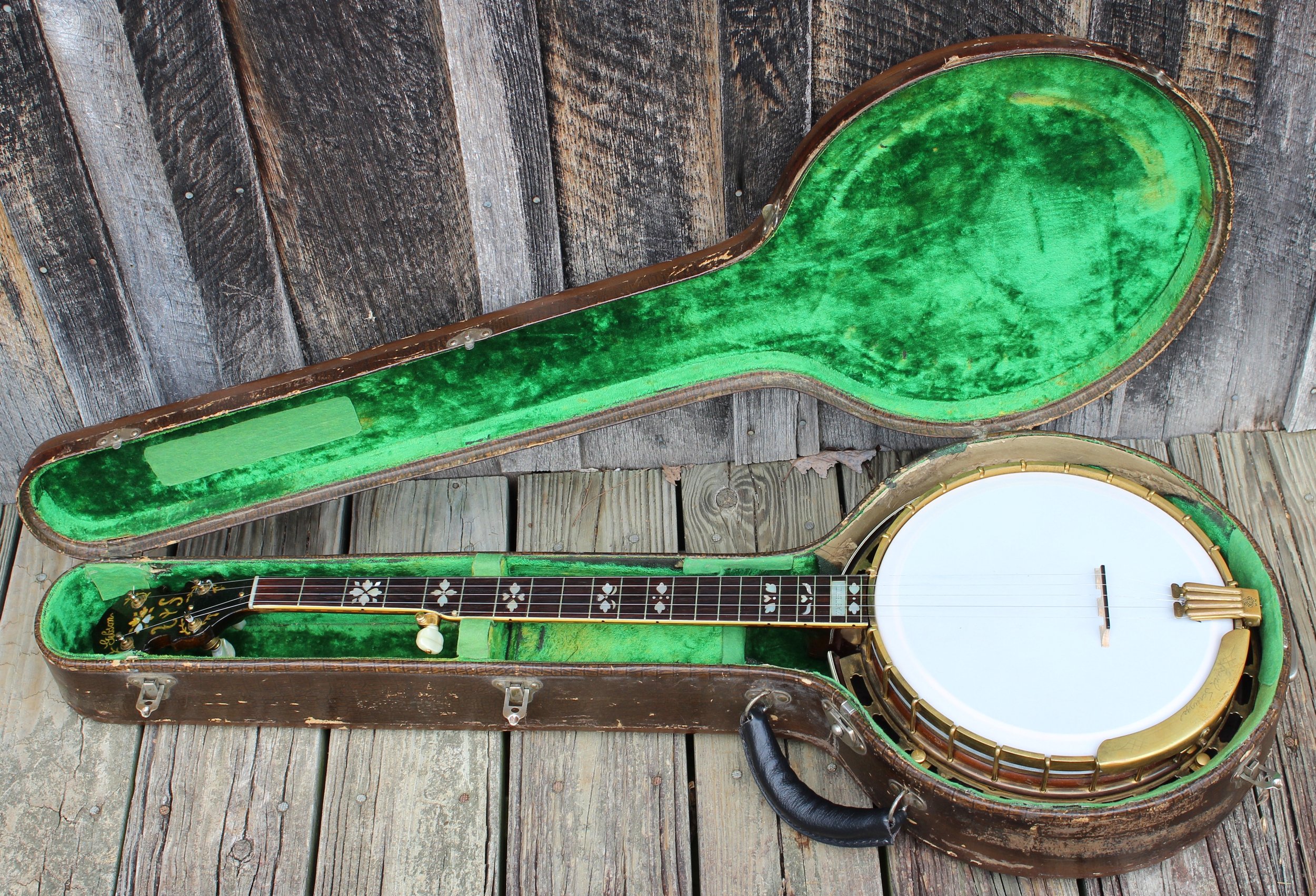
The Legendary “Ground Speed Banjo!”
1928 Gibson RB-Granada #9166-1 in excellent original condition. An extraordinary sounding banjo formerly owned by Earl Scruggs, and, in our opinion, the banjo he used on a recording session in January of 1959 that yielded two classic performances, “Ground Speed” and “Crying My Heart Out Over You” and two lesser known gems, “Iron Curtain” and “Who Knows Right From Wrong.” Earl Scruggs acquired RB-Granada #9166-1 from Myrlen Goddard in West Virginia in the 1950s, and used it as a back-up to his more famous Granada, #9584-3. Scruggs kept this banjo for nearly half a century and, in a similar fashion to all his personal instruments, he inscribed his name on virtually every part. Based on our research, this is the story of the “Ground Speed Banjo.”
Myrlen Hobart Goddard was born in Fayette County, West Virginia, in 1895 and in 1918 was employed as a miner by the New River Collieries in Eccles, Raleigh County, WVA (1918 draft card). In the 1920s he worked in the same area as miner/musicians Reed Rakes and Posey Rorer, both of whom played with Charlie Poole. Poole’s North Carolina Ramblers was the most popular string band in the country in the late 1920s and they often entertained in the coal camps. In addition to mining, Goddard also worked as a “truck farmer…on his own account” (1930 census). In 1929, he purchased a gold-plated, 5-string Mastertone banjo, RB-Granada #9166-1, from Beckley Music, probably at the behest of another Charlie Poole bandmate, Roy Harvey, who was working at the music store. One wonders, at the height of Prohibition enforcement in West Virginia, what produce Goddard might have been hauling in his truck to account for the purchase of a $200 banjo (Hobart Goddard was fined $25 “for disturbing the peace” in association with a “Moonshine Still Captured” -The Hinton Daily, September 4, 1921). Via Beckley Music, Goddard sent the banjo back to Gibson to have a crack in the heel repaired (Gibson shipping ledger documents return shipping April 9, 1936).
By 1950, Earl Scruggs’ more famous Granada banjo (9584-3) was worn to almost unplayable condition. While that banjo was in Kalamazoo for repair, Scruggs stayed on the lookout for a back-up banjo and continued to do so even after his Granada was returned on May 9, 1951 (complete with bow-tie inlay fingerboard). Flatt and Scruggs played numerous show dates in the Meadow Bridge area of West Virginia, quite often alternating with a feature in a movie theatre. (For example, West Virginia dates include: 6/17/55, the Beckley Memorial Building in Beckley; 7/12/55 in Whitesville at the Liberty Theater (again on 9/26/57 at the drive-in); 7/13/55, in Seth at the Hager Theater; 9/18/55, at the Crab Orchard Drive-in in Beckley (again on 7/18/57 and 6/12/58); 9/23/55, at Gauley Theater in Gauley Bridge (again on 10/19/56); 10/18/55, at the Groves Theater in Summersville; 10/20/55, at the Lester Theater n Lester; 11/14/57, Rialto Theater in Madison (again on 8/21/58 at drive-in); 7/10/58, at the Greenbriar Drive-in in Hinton; 7/30/58, Sunset Drive in Charmco).
In the 1950s, Myrlen Goddard was living in Quinnimont, West Virginia, working as foreman on the tipple for Bellwood Coal Company (US census and draft card). Since the National Recovery Act had helped unions enforce shorter workweeks for miners, there would have been numerous occasions for him to hear Earl Scruggs in person at any of the venues listed above. As the railroads had switched to diesel and more and more people were using gas and oil, the coal business suffered in the 1950s. Possibly, Goddard found it was time to sell his expensive banjo. Or perhaps, he had simply settled down from the Charlie Poole lifestyle. For whatever reason, Goddard offered Earl Scruggs his banjo.
During the winter of 1958-59, Flatt and Scruggs switched locales with Frank “Hylo” Brown, who moved to West Virginia for TV broadcasts and touring, while Flatt and Scruggs filmed their shows in Jackson, Tennessee, and Jackson, Mississippi. Flatt and Scruggs did not appear again in West Virginia in 1958 after the summer shows, so Scruggs must have met up with Goddard at around (or before) the time of the Greenbriar Drive-in show (poster below).
At some point in the late ‘50s, Scruggs commissioned both a new neck for 9584-3 (returning it to the original hearts-and-flowers inlay pattern) and special tuners for such songs as “Flint Hill Special.” During these transitions, he once again required a back-up banjo. On January 23, 1959, Flatt & Scruggs went into the Bradley Recording Studio in Nashville for a Don Law-produced session that yielded four songs including the instrumental, “Ground Speed.” Apparently, Scruggs used 9166-1 on that session, and it also appears to have been the banjo Scruggs played on Red Foley’s cover of “Polka On The Banjo” in February, 1962. We may never know the exact circumstances that inspired him to make these choices. However, after countless hours listening to these recordings and then listening to this banjo, we have come to the conclusion that this is the most likely explanation of the unique sound of the banjo on these cuts. (Using headphones, we did cross reference comparisons on “Flatt and Scruggs 1948-1959” Bear Family Records 4-CD box set, as well as the original vinyl album “Foggy Mountain Banjo.”)
Most of the features and appointments of 1928 Gibson RB-Granada #9166-1 are original and consistent with factory specifications for that model and year. They include curly maple 5-string neck and resonator; rosewood fingerboard with hearts-and-flowers inlay; fiddle-shaped peghead with hearts-and-flowers inlay; gold-plated metal parts; “Granada” pattern engraving on the stretcher band; 3/4 inch maple rim with 40-hole archtop tone-ring; 2-pc brass flange; black-white-black binding and two-concentric circles of wood purfling on resonator; black-white-black binding and wood purfling on neck; clamshell tailpiece; two-band gold-plated tuners with pearl knobs; 2-piece armrest. Factory original specs that are unique to this banjo for this model and year include one of the style 5 engraving patterns on the armrest; tenor banjo (short) Mastertone block; sunburst resonator. After-market alterations include: 5th string spike hole at 7th fret (which has been filled); plastic head, bridge and geared 5th tuning peg; possibly the flower design engraving on tailpiece; and of course, the signature and initials of Myrlen H. Goddard and the many inscriptions by Earl Scruggs. Another interesting observation, the appearance of the numbers on the inside the resonator leads one to believe there may have been some confusion at the factory on exactly which number should be inscribed on the resonator. It seems there was no such confusion for Mr. Goddard or Earl Scruggs, as they both repeated the number in several places.
Now, the legendary “Ground Speed” banjo is looking for a new home. Please inquire for terms. Additional details, photos and copies of documents are also available for serious interested parties.
(Note: In our ongoing research into the history of this banjo, we are “looking through a glass darkly.” However, using draft cards, census records, city directories and newspaper articles, as well as years of interviews, we have pieced together the story of this banjo. Special thanks to Penny Parsons for the details of Flatt and Scruggs performances and Greg Earnest for banjo specifications, mining details and for pointing me to the Red Foley recording. However, any mistakes or “leaps of faith” are mine and mine alone.)
